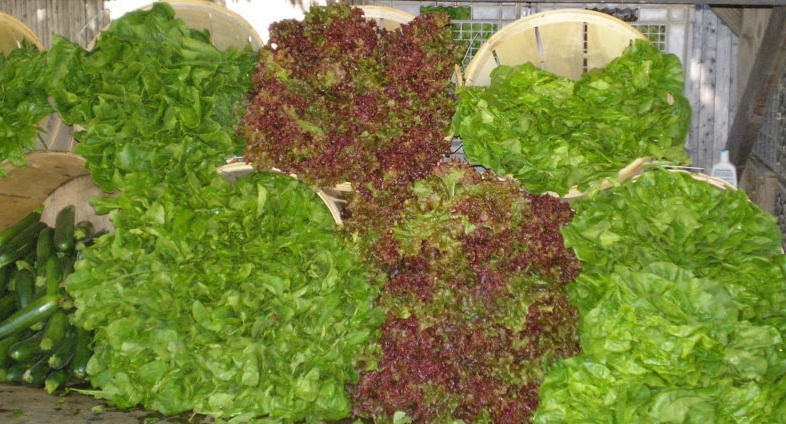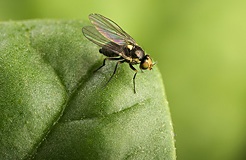
Features
Chemicals
Insects
New green lettuce leaves leafminers in the lurch
December 2, 2008 By USDA Agricultural Research Service
 NEWS HIGHLIGHT
NEWS HIGHLIGHT
New green lettuce leaves leafminers in the lurch
Green leaf lettuces are yummy in any garden salad but are also a favourite for leafminers, or Liriomyza langei.
Green leaf lettuces are yummy in any garden salad but are also a favourite for leafminers, or Liriomyza langei.
 |
| An adult leafminer. Photo Courtesy of USDA-ARS |
To combat leafminers, Agricultural Research Service (ARS) plant geneticists Beiquan Mou and Edward Ryder (now retired) developed the world’s first leafminer-resistant green leaf lettuce.
Adult leafminers, which are shiny black flies with a yellow triangle on their backs, ruin leaves when they puncture them to feed on sap. Females add to the damage when they lay tiny oval eggs inside the leaves. Wormlike larvae hatch from the little eggs and, as they feed, create the mine-like tunnels for which the pest is named.
In addition to its leafminer resistance, the attractive, robust new lettuce can shrug off attacks by the virus that causes lettuce mosaic. This disease, spread by green peach aphids (Myzus persicae), gives leaves a sickly mottled or mosaic appearance, rendering the lettuce unmarketable.
 Mou and Ryder, based at the ARS Crop Improvement and Protection Research Unit in Salinas, Calif., screened more than 100 kinds of lettuce from ARS’ Pullman, Wash.-based world collection of lettuces, and from elsewhere, before selecting ARS’ own Salinas 88 lettuce and a red leaf lettuce as parents for the new green leaf offspring. They put it through seven years of laboratory, greenhouse and field tests, then made it available to plant breeders and researchers earlier this year.
Mou and Ryder, based at the ARS Crop Improvement and Protection Research Unit in Salinas, Calif., screened more than 100 kinds of lettuce from ARS’ Pullman, Wash.-based world collection of lettuces, and from elsewhere, before selecting ARS’ own Salinas 88 lettuce and a red leaf lettuce as parents for the new green leaf offspring. They put it through seven years of laboratory, greenhouse and field tests, then made it available to plant breeders and researchers earlier this year.
The lettuce, known as MU06-857, is the newest in a series of first-rate iceberg, romaine, and leaf lettuces – and spinach – from the internationally known plant-breeding program at Salinas. The lab’s crisp, crunchy iceberg lettuces, for example, have made iceberg the best-selling lettuce in America. Nearly every iceberg lettuce grown in the United States today owes at least some of its parentage to ARS’ lettuce-breeding research.
Print this page